In Conversation with Interior Designer Jess Cooney
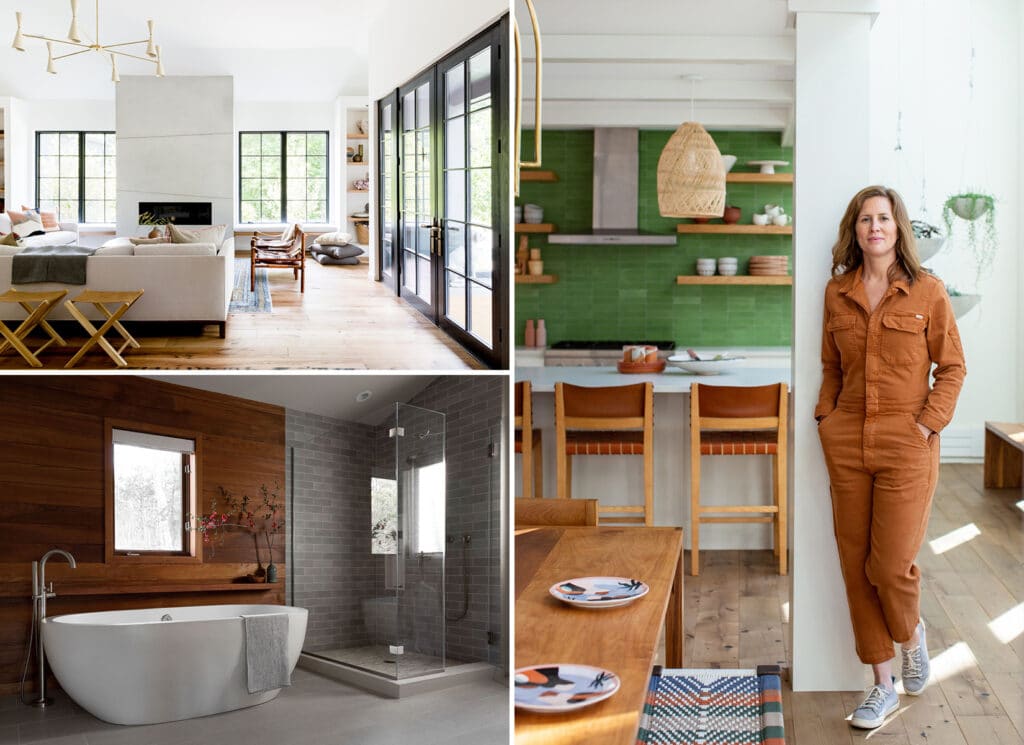
As was the case for many interior designers during the pandemic, Jess Cooney’s list of projects grew much longer—and the scope of those projects more extravagant—during lockdowns last year. Not only were people nationwide looking to change their homes, many also sought to change their area code. In fact, of the 10 American cities that welcomed the most new residents during COVID, five are within a two-hour radius of Jess’ home in Great Barrington, Massachusetts.
There, the designer and her growing team work from an old gas station they gut-renovated in 2018. Now, the Jess Cooney Interiors design studio, which includes a sample library, conference rooms and private offices, quite literally stops traffic. “Business exploded when people left the cities in droves during the pandemic and moved to this area,” she says. “It’s a great place to raise kids. I have three of my own, and I don’t know if I could do everything I do if I lived somewhere else. I get my kids off the school bus. I coach their soccer team. I work full time, and I’m able to juggle all of it because I can get home in two minutes and to the soccer field in three minutes.”
Reflecting on the pandemic’s more universal impact on design, Jess says, “Right now in our society we are, in many ways, tearing things down and engaging in our own discovery phase. What we’re uncovering are foundational issues that have needed fixing for many years. But we’re also uncovering some hidden treasures, pieces that we want to expose and highlight. My hope is that part will grow and we will endure this next phase of reconstruction to find the beauty on the other side.”
A longtime fan of Native Trails products, Jess spoke to us about some of the most notable projects where she’s used the NativeStone product line.
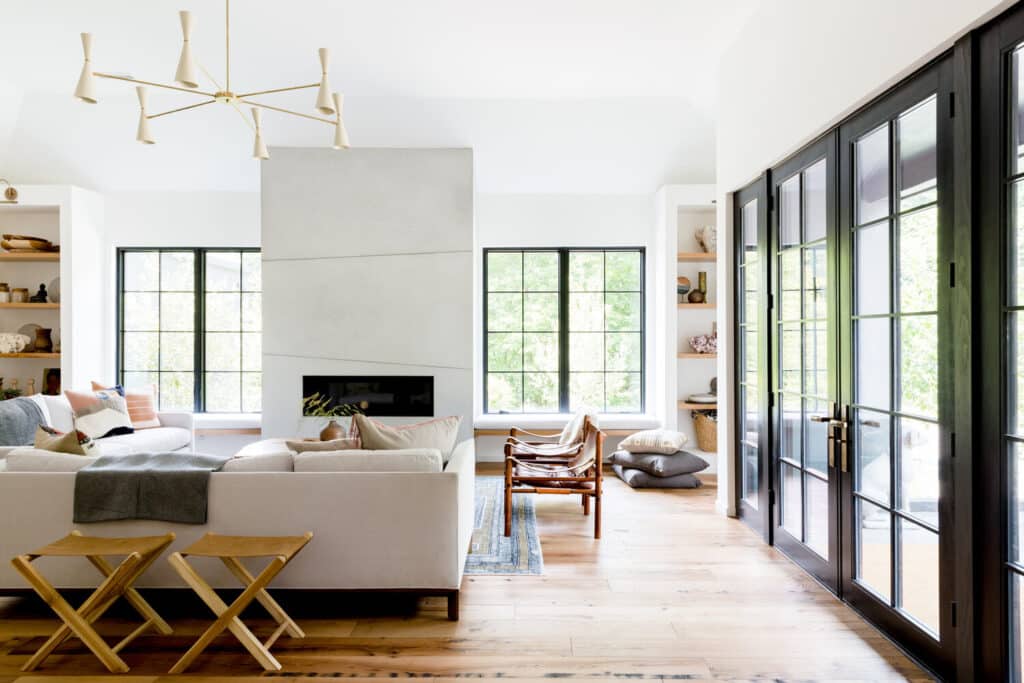
You take a lot of your design cues from your surroundings in New England’s beloved Berkshires. What inspires you about the region?
JC: Northern Massachusetts is a great area for design, with a lot of influences. We have a half-dozen original paper mills, and Lee Marble Quarry was here. Daniel Chester French had his studio in Stockbridge and built the Lincoln Memorial with marble from Lee. So there’s this mixture of art, industry and grittiness. There’s also this highly cultured side. So many people from New York and Boston are flocking to this area and building homes. There are also beautiful old farmhouses here; I live in a Victorian from the 1800s that’s up above the town. And right now, we’re starting a project with a client who moved three barns to a property that is absolutely stunning. We love to play with that mix of modern and rustic and industrial all together in our designs—it feels really representative of the Berkshires. And your concrete product plays so well into that aesthetic.

We’ve happily come across our products in your designs many times. Can you tell us about some of your favorite designs incorporating Native Trails?
JC: Yes, we’ve infused it into our projects on many different occasions. We can use it in so many different ways and applications. Most recently, we used your stone bathtub in front of a beautiful cedar wall. That home had three different master suites for the owners and their kids. So it was like doing three really large primary bathrooms. The one with your tub was our favorite.
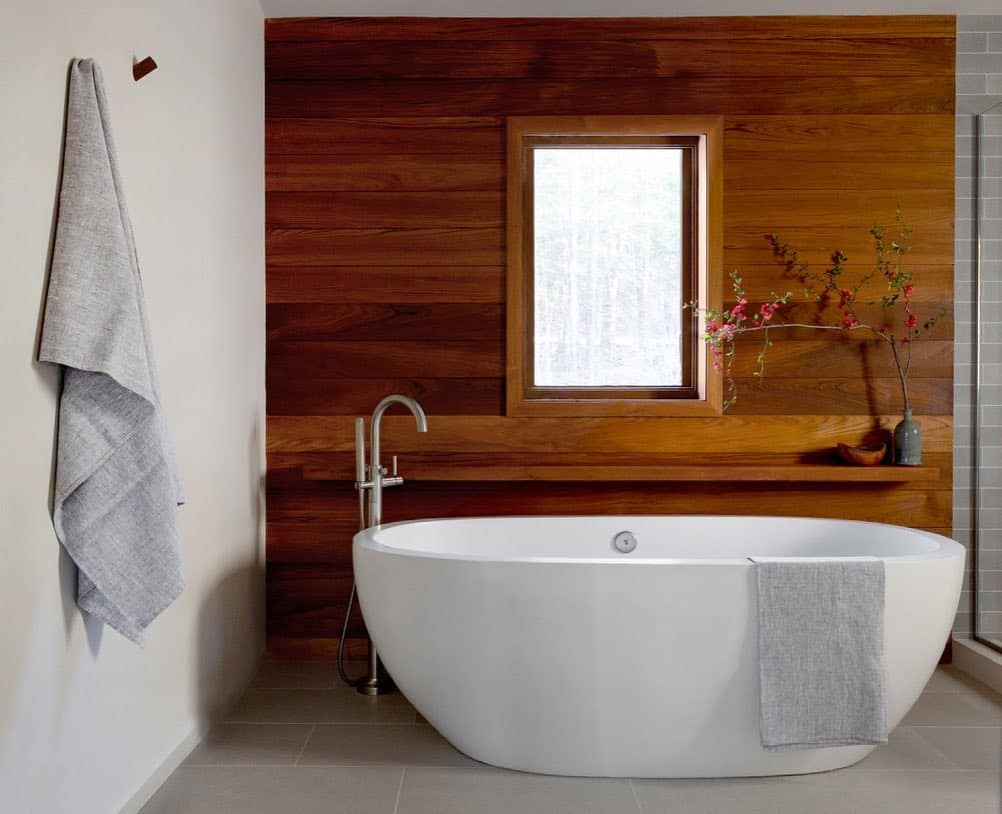
Speaking of recent projects, tell us about your new studio in Great Barrington.
JC: It was an old gas station. Before we bought it, it was a vintage lighting store, and the bank had foreclosed on it. It was leaking in seven different spots from the from the ceiling, and it was moldy and had been sitting there for three years empty. It was really, really bad.
So, you said, “Perfect! I’ll take it.”
JC: That’s always my style. People in town came up to me after we renovated it, and they were like, “You did such a service to this town because it was such an eyesore there for so long.” It’s in this pretty prominent corner before you go over this bridge entering the downtown. Now that it’s done, people just sit in traffic in front of our offices all day, every day. It definitely put our business on the map in a different way.
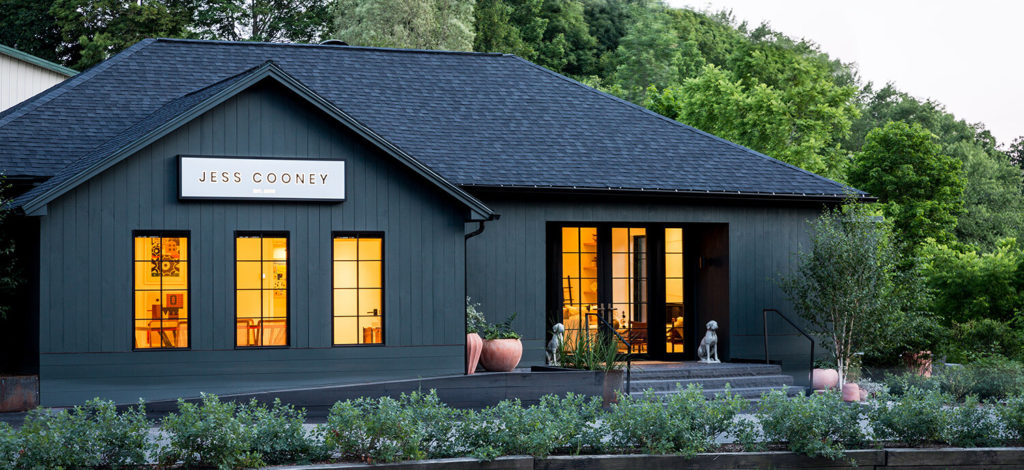
How does that feel, compared to when you were designing more humble homes?
JC: It feels like this kind of dream that you’re living in. Because the clients are amazing, the projects are amazing, and we can handpick the client and the project. Then, at the same time, it’s just a total overwhelm of like, “Okay, now we have to do all of this.” I’ve been trying to hire more staff, which is really challenging at the moment. So I feel like I have no right to complain about anything and that we’ve been given a real opportunity to showcase what we do.
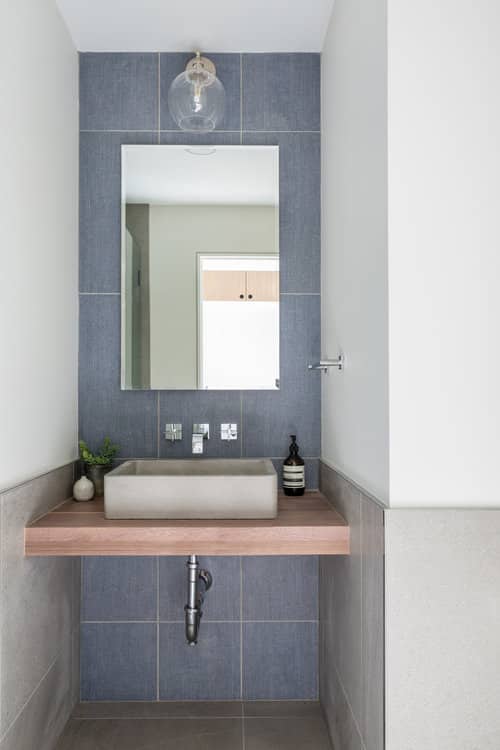
Do have a design mantra or motto that you abide by in your work?
JC: One that I’ve used with my team a lot is that people pay money for value—not for passion, or enthusiasm or energy or ego, but they pay money when they see the value in something. So, really, what the client values is what they’re willing to pay for. And everyone values different things. So you have to tap into their values. The Berkshires is known for people who are more down to earth. The people who come here are not pretentious. They’re not trying to show off, and what they usually value is beautifully durable homes where someone can put their feet up, or dogs can come in. They want a house that can be muddy and wet and really withstand the test of time but be beautiful at the same time. People will buy a house in the Hamptons if they want to show off. They come here to lead a really beautiful, quiet, cultured, rugged lifestyle, which I like about the people who come from the city.
You grew up playing soccer. How did you get into interior design?
JC: My dad was big into renovations. He would always buy the worst house in the neighborhood. Like I actually cried and was teased about one of the houses my dad bought. The front porch was falling off of it. You know, it was beautiful when he was done with it. He has this love of transforming buildings, and I share that. When I lived in D.C., I was doing marketing for professional athletes, and my husband was in medical school. Then we moved to Colorado for his residency, and I had this ability to reinvent myself. I walked into this interior design firm, and gave them my resume. I worked there for three years, and did my schooling while I was there.
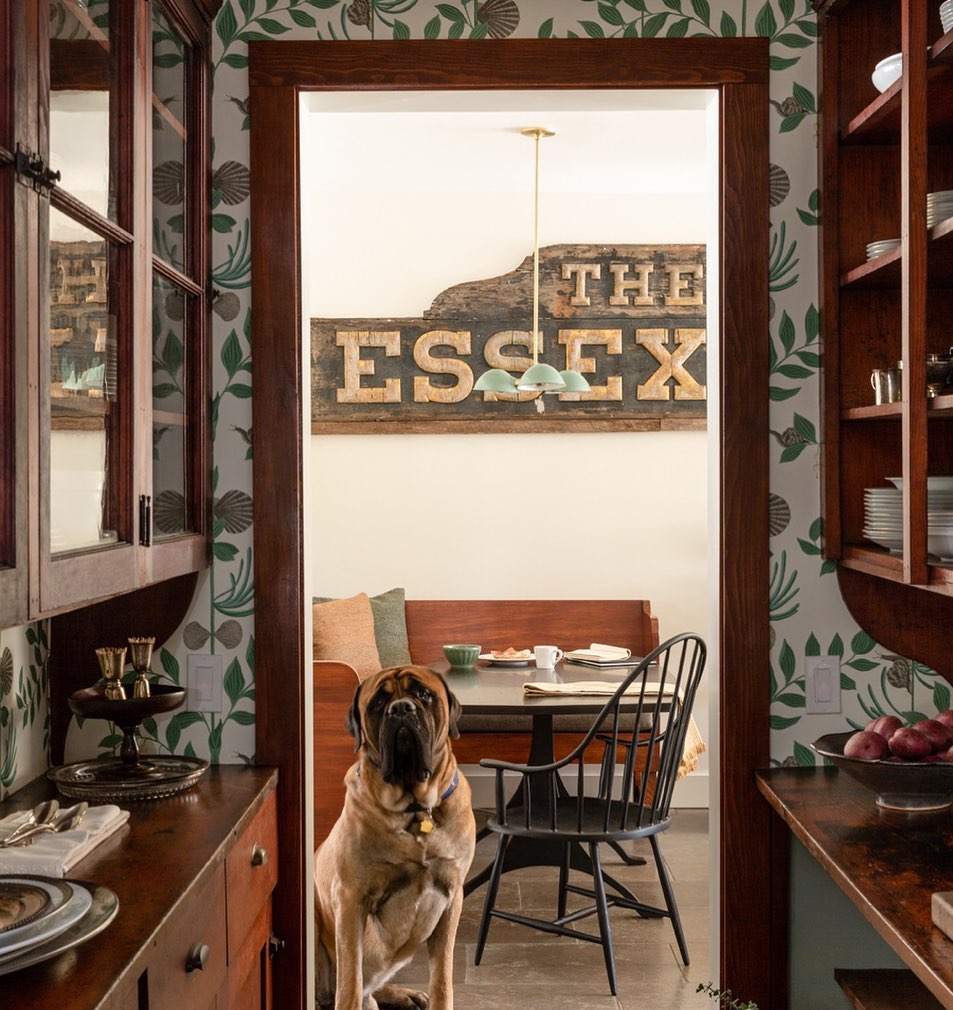
What is your favorite room in a home to design?
JC: Probably a kitchen pantry. I have one of the most beautiful pantries that exists. It’s from the 1800s. It has a beat up old copper sink that’s original from 1890, and wood countertops, and these beautifully huge, tall leaded glass doors. Everything in there is original. I tell my clients all the time that you can have design that is timeless. That pantry will never not be stunning. I love that it functions so well. I love loading up a pantry and then having a kitchen be really understated. With a large walk-in pantry, you can just fill it with everything that you don’t want to see in the kitchen.
Are there some paint colors that you return to again and again?
JC: Well, we are known for the paint color on the outside of our building. People call us every single week and ask us what that color is. It’s Farrow & Ball’s Studio Green. It has this black, gray, green cast to it that changes throughout the day. We like to use black a lot. We like a lot of deeper, moodier contrasts. We love deep wood tones, we love metal, love concrete.
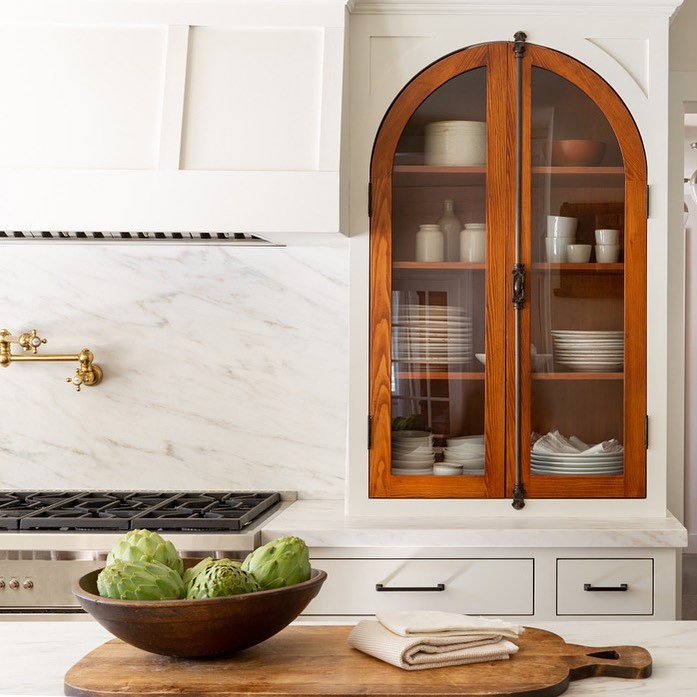
What interior designer has inspired you the most?
JC: I’ve always been a huge fan of Kelly Wearstler. I think she’s so brave. She walks to her own beat, she always has. Sometimes to be a household name you have to water down your look a little bit to make it universally appealing. Kelly has stayed true to her values and her aesthetic. I hugely appreciate that about her.
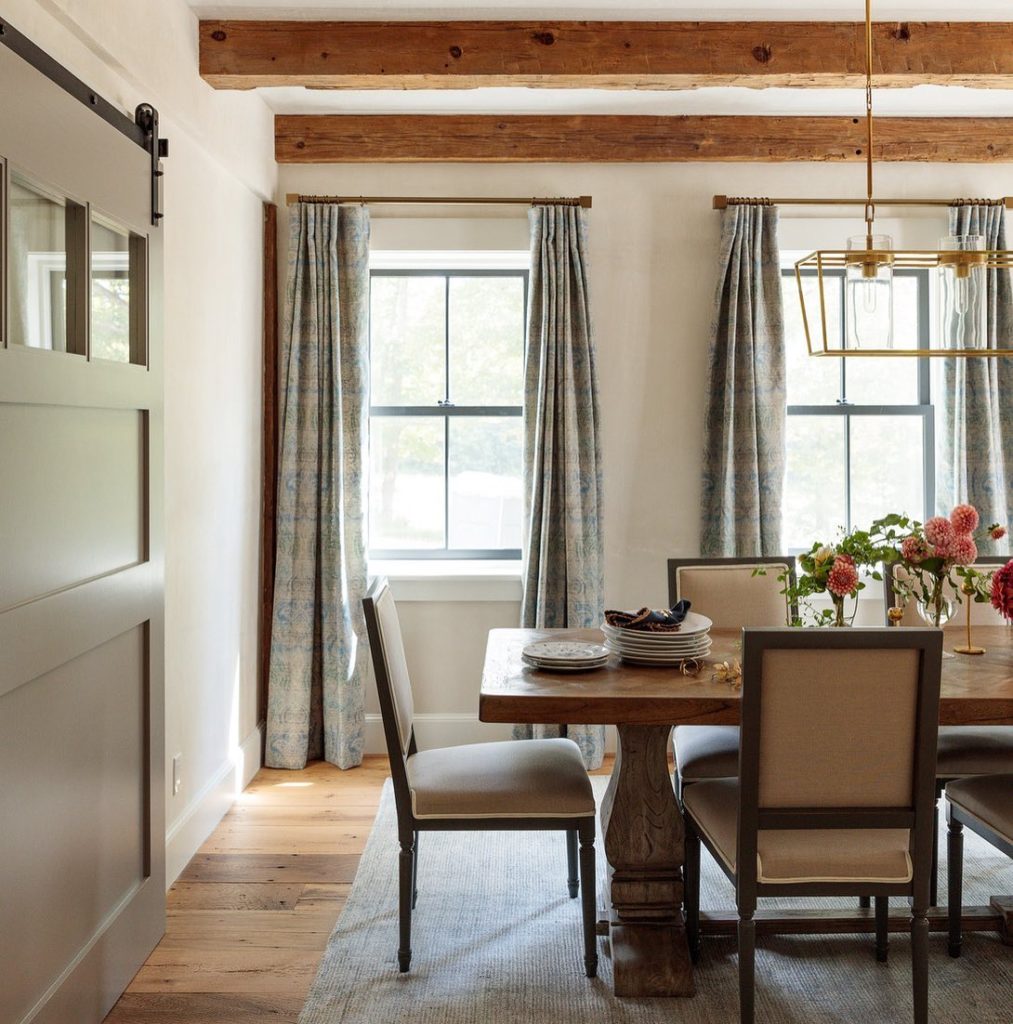
What is your definition of home?
JC: Home is a place where you can sink deeply into your space. I think it’s really hard, especially for women, to relax. I always say on a project, “If the mom can relax, I’ve done a good job.” Because generally, most guys can sit down and read the paper amid chaos, but women need their space to be a certain way before they can sit and relax. When they can relax, it usually means that everything has a place in the house. That helps people decompress and sink a little more deeply into their space. That’s when I feel like I’ve done a good job for people.
Photographer: Lisa Vollmer
See more designs featuring in our Inspiration Gallery or read more about designers we love on our blog.
